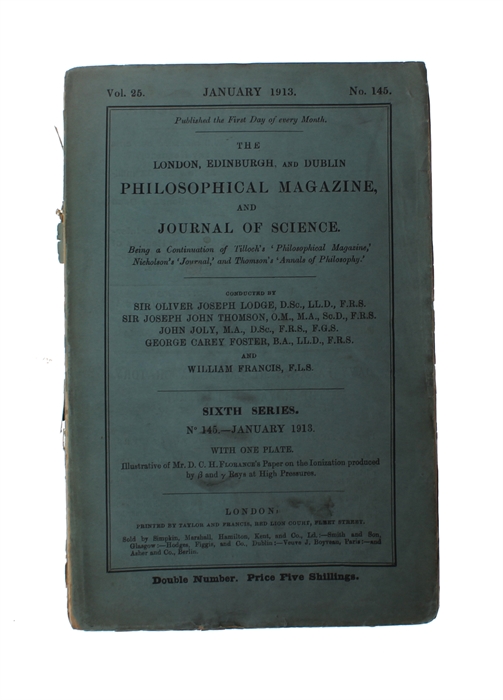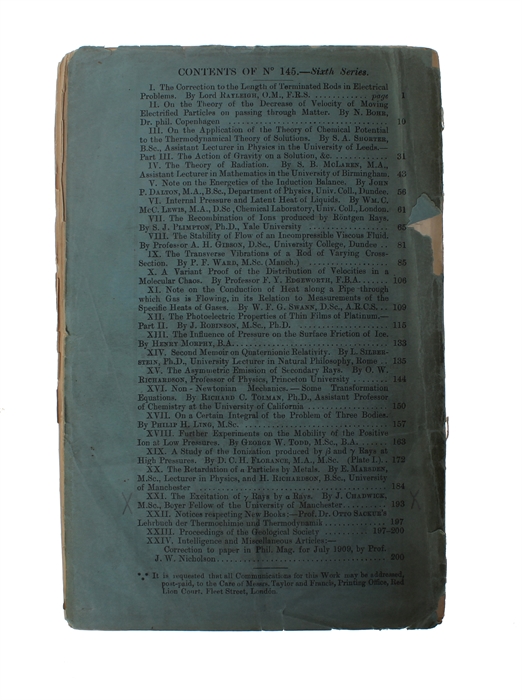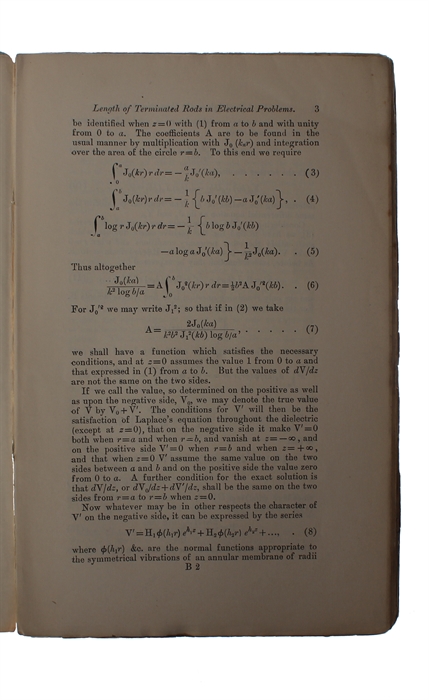BOHR'S FIRST WORK ON NUCLEAR PHYSICS
BOHR, NIELS.
On the Theory of Decrease of Velocity of Moving Electrified Particles on passing through Matter. In: Philosophical Magazine Vol. 25, No. 145, January 1913 pp. 10-31.
London, Taylor & Francis, 1913.
8vo. Original printed wrappers; chipped, backstrip lacks. The whole issue. 200 pp., 2 plates.
First edition of Bohr's first work on nuclear physics, published just before his 'On the Constitution of Atoms and Molecules'.
During his visit to Manchester Bohr had the chance to get a first hand account of Rutherford's investigations on the penetration of alpha-particles through matter. In order to explain the large-angle scattering of alpha rays, which Rutherford had observed, he proposed his "nuclear" model of the atom in contrast to J.J. Thomson's "plum pudding" model in 1910. Bohr eagerly took up the new model and soon recognized its far-reaching implications. In particular, he pointed out that the nuclear model of the atom implied a sharp separation between the chemical properties, ascribed to the peripherical electrons, and the radioactive properties, which affected the nucleas itself.
In this paper the theory of the decrease of velocity of moving electrified particles in passing through matter is given in a form, such that the rate of the decrease in the velocity depends on the frequency of vibration of the electrons in the atoms of the absorbing material. In the conclusion Bohr could state 'that a hydrogen atom contains only 1 electron outside the positively charged nucleas, and that a helium atom only contains 2 electrons outside the nucleas'.
Rosenfeld, Bohr Bibliography No. 5. Rosenfeld, Dictionary of Scientific Biography II, pp. 240-41.
Order-nr.: 19544



